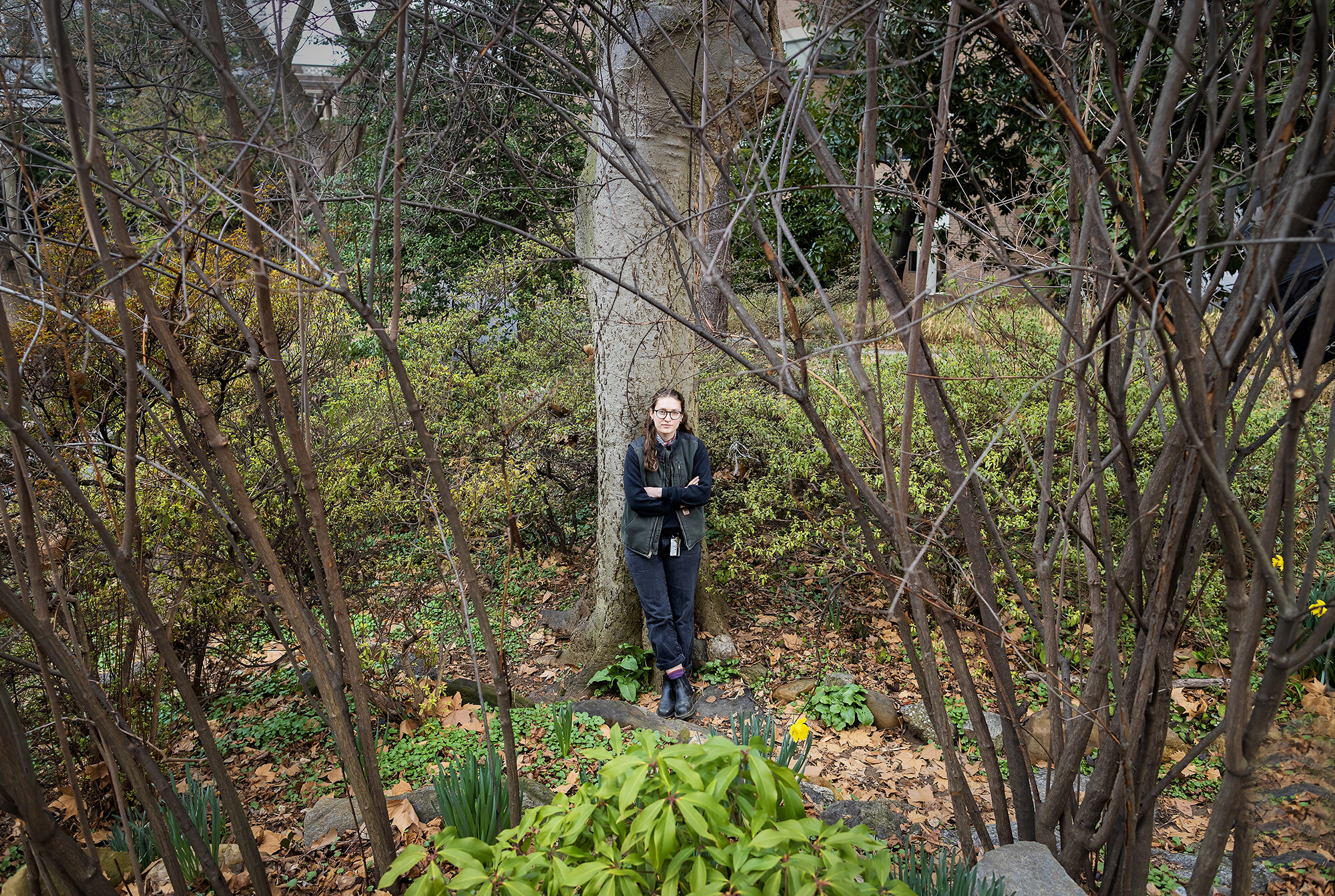
(From left) Doctoral student Hannah Yamagata, research assistant professor Kushol Gupta, and postdoctoral fellow Marshall Padilla holding 3D-printed models of nanoparticles.
(Image: Bella Ciervo)

Tess Kuracina grew up not far from Longwood Gardens, in southern Chester County. It’s a part of the world where people take their gardening seriously. But it wasn’t until a summer off from her undergraduate studies in sculpture at Temple University that Kuracina began to consider how gardening might be a part of her professional path. “I needed a summer job and applied to Longwood because it was close to my parents’ house and I wanted to spend time outside,” she says. “I ended up falling in love with gardening and horticulture and plants.” Subsequent gigs took her to Mt. Cuba Center, Penn’s Morris Arboretum, Barnes Arboretum, and Chanticleer. In February 2020, she joined Penn’s Biology Department as garden supervisor at James G. Kaskey Memorial Park, otherwise known as the BioPond. Not long after, she enrolled in the Master of Environmental Studies (MES) program at Penn, and has taken coursework in ecology, biology, historic preservation, geographic information systems, and anthropology.
Taking care of the park and its gardens requires tasks any gardener knows well: weeding, watering, mulching, and planting, varying by the seasons. The winter, far from a slow season, is taken up with pruning, cutbacks, weeding when the weather allows, and accessioning to record every plant moved or planted in the previous year. Spring is a time for planting, summer occupied by watering and weeding, and fall—“probably my favorite,” says Kuracina—is when bulbs go in. “I love bulbs and I love planting them. I’ve planted 10 to 12,000 bulbs a year each year I’ve been here.”
Two part-time seasonal workers assist Kuracina in developing the park and gardens, “to make them more beautiful and special every year,” she says. Kuracina is also responsible for the park’s signage, website, and social media. Even her master’s degree work ties in. Her capstone for the MES program has involved collecting wild seed from local native plants, both in Wissahickon Valley Park and at Mt. Cuba Center, some of which has been sown at the BioPond.
Founded at the close of the 19th century, Kaskey Park is the University’s original botanical garden and served as a resource for botany faculty at the time. While different building proposals over the years have contemplated doing away with the park, persistent advocacy from devoted stewards has kept it intact, albeit at a smaller size than its original five acres. “Part of the identity of the park even today is to try to honor that past,” Kuracina says. She and other gardeners before her have drawn inspiration from what is known about the park’s historical collection. But unlike some of the places where Kuracina gardened previously, Kaskey Park is not a public garden with paid admission, but rather a park. “I think the differences are marked,” she says. “The accessibility and the value that the park has to West Philadelphia, Philadelphia generally, and Penn specifically is just great.”
During the height of the COVID-19 pandemic, Kuracina says visitors would approach her while she was working and tell her how much they valued the space as a peaceful refuge during a difficult time. She also notes that the parks’ small size and location—tucked in between campus buildings—lends it a certain appeal, a “secret garden” aura. “People feel it’s this magical space,” Kuracina says. “If you stumble upon it, you’re surprised and delighted. It’s a hidden gem.”
Katherine Unger Baillie

(From left) Doctoral student Hannah Yamagata, research assistant professor Kushol Gupta, and postdoctoral fellow Marshall Padilla holding 3D-printed models of nanoparticles.
(Image: Bella Ciervo)

Jin Liu, Penn’s newest economics faculty member, specializes in international trade.
nocred

nocred

nocred